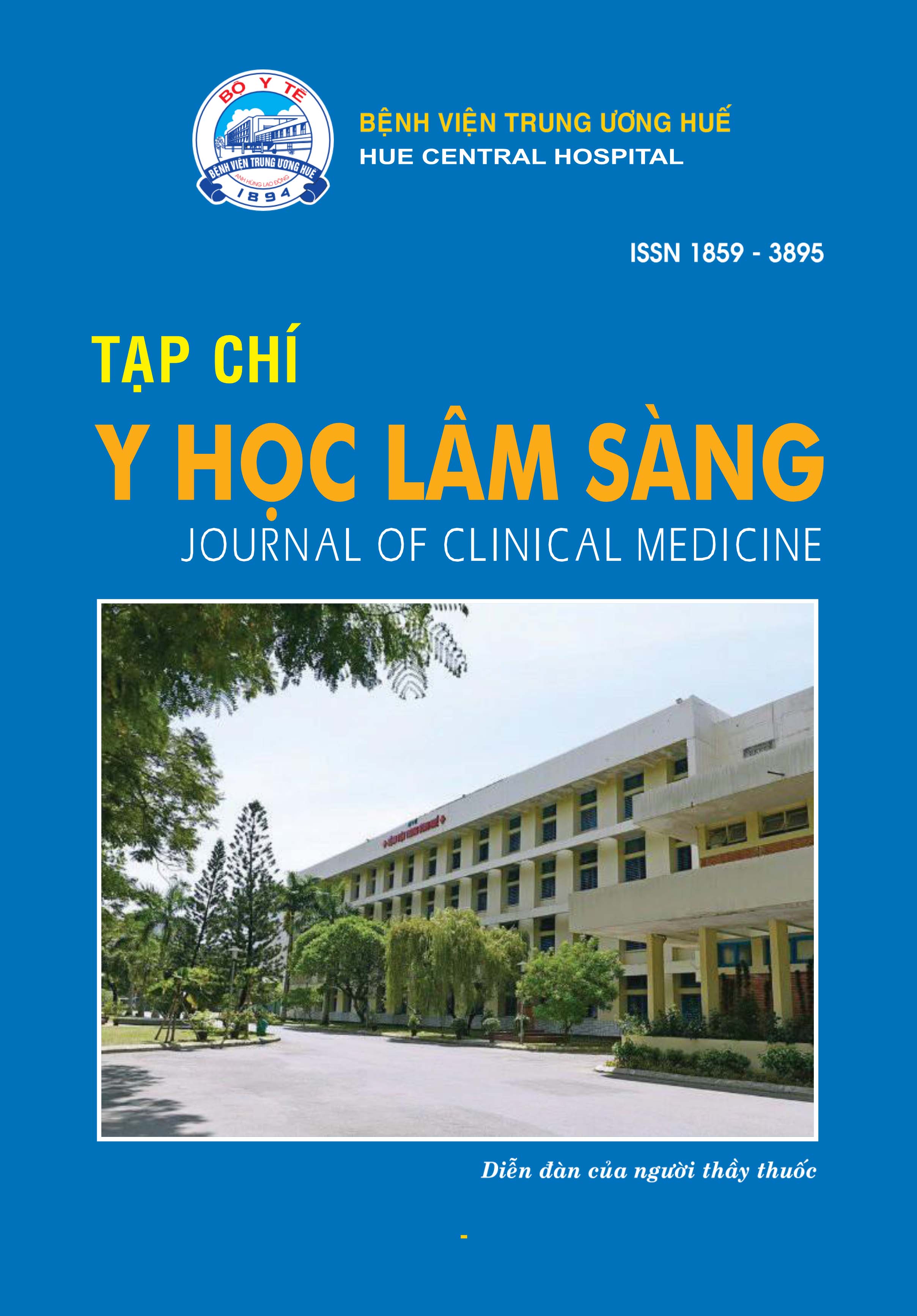Abstract
Objectives: To compare 3-Dimensional Conformal Radiotherapy (3D-CRT) with Intensity Modulated Radiotherapy (IMRT) with Volumetric - Modulated Arc Therapy (VMAT) for PTV coverage and OAR sparing in rectal cancer
Methods: Radiotherapy plans for 30 patients with stage II-III rectal cancer were prospectively developed for 3D-CRT, IMRT and VMAT using Varian Eclipse planning system in Ho Chi Minh City Oncology Hospital from 01/01/2019 to 31/12/2019.
Results: Radiotherapy plans for 30 patients, average age 57.2 years old. Ratio of male: women = 1 : 2.3. Tumors were in the lower (53.3%), inguinal lymph node radiotherapy accounted for 23.3%. The dosimetric for PTV_4500 and PTV_5040 of IMRT and VMAT is better than 3D-CRT: D98%, Dmean, V95, V100, HI and CI (p<0.05); VMAT is better than IMRT at D2% and IMRT is better than VMAT in
V100 and HI (p<0.05). The MU of the IMRT is the highest, then VMAT and then 3D-CRT (p<0.05); therefore, the radiotherapy time of the 3D-CRT technique is the fastest, IMRT complexity involves the requirement of longest treatment times. The dosimetric of IMRT and VMAT in the bladder, femoral head and bowel bag is better than 3D-CRT especially with V45 (femoral head and bowel bag), VMAT better than IMRT dose V45 of bowel bag. The bladder volume of group II (250 - 350ml) and group III (> 350ml) helps reduce the dose of the bowel bag than group I (< 250ml). The dosimetric of IMRT and VMAT in the femoral head during inguinal lymph node radiotherapy is better than 3D-CRT, the dosimetric of VMAT is better than IMRT in V30, V40 and V45 (p<0.05).
Conclusions: The dosimetric of IMRT and VMAT techniques are better than 3D-CRT into the target PTV_4500, PTV_5040 and the OARs (bladder, femoral head and bowel bag). VMAT is superior to IMRT. The optimal bladder volume is 250 - 350ml.
References
https:// www.uicc.org/new-global-cancer-dataglobocan-2018
Kapiteijn E, Marijnen C A, Nagtegaal I D et al. Preoperative radiotherapy combined with total mesorectal excision for resectable rectal cancer. N Engl J Med. 2001.345:638–646.
Cecil T D, Sexton R, Moran B J, Heald R J. Total mesorectal excision results in low local recurrence rates in lymph node-positive rectal cancer. Dis Colon Rectum. 2004. 47:1145-1149.
Arbea L.Intensity-modulated radiation therapy (IMRT) vs.3D conformal radiotherapy (3DCRT) in locallyadvanced rectal cancer (LARC): dosimetriccomparison and clinical implications. Radiation Oncology. 2010. 5:7.
Baglan KL, Frazier RC, Yan D et al. The dose-volume relationship of acute small bowel toxicity from concurrent 5-FU based chemotherapy and radiation therapy for rectal cancer. Int J Radiat Oncol Biol Phys. 2002.52:176-183.
Tho LM, Glegg M, Paterson J et al. Acute small bowel toxicity and preoperative chemoradiotherapy for rectal cancer: Investigating dose-volume relationships and role for inverse planning. Int J Radiat Oncol Biol Phys. 2006. 66:505-513.
Samuelian J.M. Reduced Acute Bowel Toxicity in Patients Treated With Intensity-Modulated Radiotherapy for Rectal Cancer. Radiaion Oncology. 2011. 82(5):1981-1987
American Joint Committee On Cancer. AJCC Cancer staging manual, Eighth Edition. 2017. 268-269.
Valentini et al. International consensus guidelines on Clinical Target Volume delineation in rectal cancer. Radiotherapy and Oncology, 2016. 120(2), 195-201.
Hodapp N. The ICRU Report 83: prescribing, recording and reporting photon-beam intensity-modulated radiation therapy (IMRT). Strahlenther Onkol. 2012. 188(1):97-9
Simson DK et al. Dosimetric Comparison between Intensity Modulated Radiotherapy and 3 Dimensional Conformal Radiotherapy in the Treatment of Rectal Cancer. Asian Pac J Cancer Prev. 2016.17(11):4935-4937.
Kaplan SO. Dosimetric Comparison of Intensity Modulated Radiotherapy and Volumetric Arc Therapy for Rectal Cancer. Turk J Oncol. 2019. 34(2):59-65.
Luna R, de Torres Olombrada MV. mARC preoperative rectal cancer treatments vs. 3D conformal radiotherapy. A dose distribution comparative study. PLoS ONE. 2019. 14(8): e0221262.
Fujioka C, Ishii K et al. Optimal bladder volume at treatment planning for prostate cancer patients receiving volumetric modulated arc therapy. Pract Radiat Oncol. 2016.6(6):395-401
Yoon HI, Chung Y, Chang JS, Lee JY, Park SJ, Koom WS. Evaluating Variations of Bladder Volume Using an Ultrasound Scanner in Rectal Cancer Patients during Chemoradiation: Is Protocol-Based Full Bladder Maintenance Using a Bladder Scanner Useful to Maintain the Bladder Volume?. PLoS ONE. 2015. 10(6): e0128791.
Roeske JC, Bonta D, Mell LK et al. A dosimetric analysis of acute gastrointestinal toxicity in women receiving intensitymodulated whole-pelvic radiation therapy. Radiotherapy and Oncology. 2003.69: 201-203
| Published | 13-01-2025 | |
| Fulltext |
|
|
| Language |
|
|
| Issue | No. 77 (2022) | |
| Section | Original article | |
| DOI | 10.38103/jcmhch.77.11 | |
| Keywords | Intensity - modulated radiation therapy (IMRT), Volumetric modulated arc therapy (VMAT, three - dimensional conformal radiation therapy (3D-CRT), xạ trị, ung thư trực tràng, hóa - xạ trị đồng thời 3 dimensional Conformal radiotherapy (3D-CRT), Intensity Modulated Radiotherapy (IMRT), Volumetric-Modulated Arc Therapy (VMAT), radiotherapy, rectal cancer, chemoradiation |

This work is licensed under a Creative Commons Attribution-NonCommercial-NoDerivatives 4.0 International License.
Copyright (c) 2022 Journal of Clinical Medicine Hue Central Hospital

